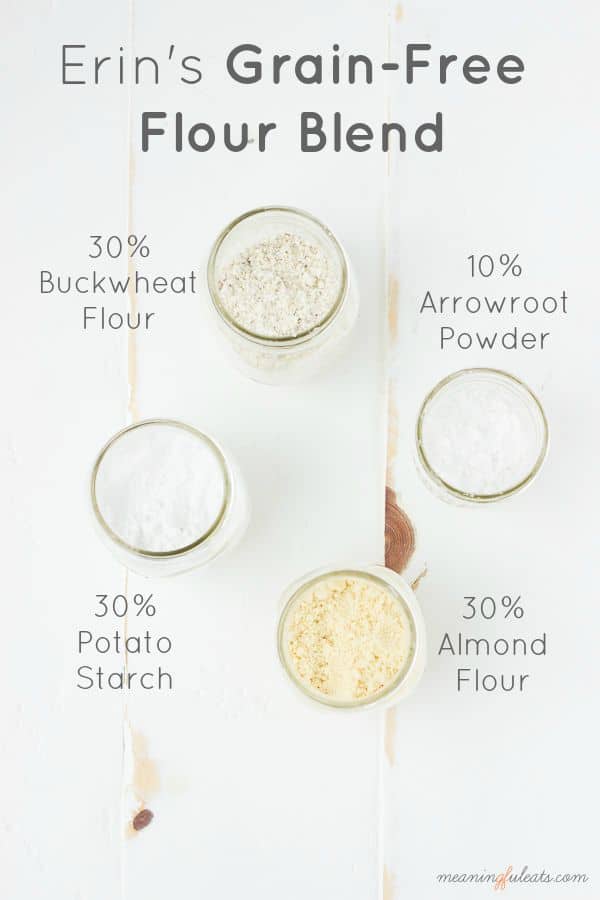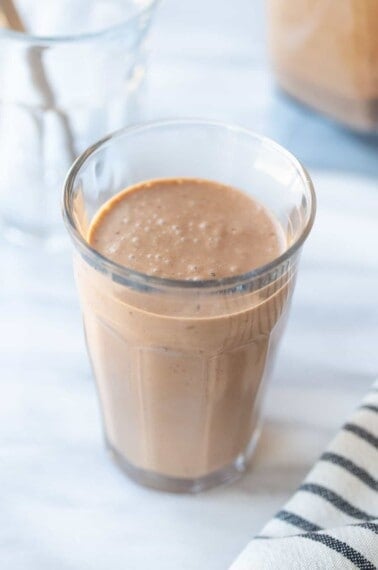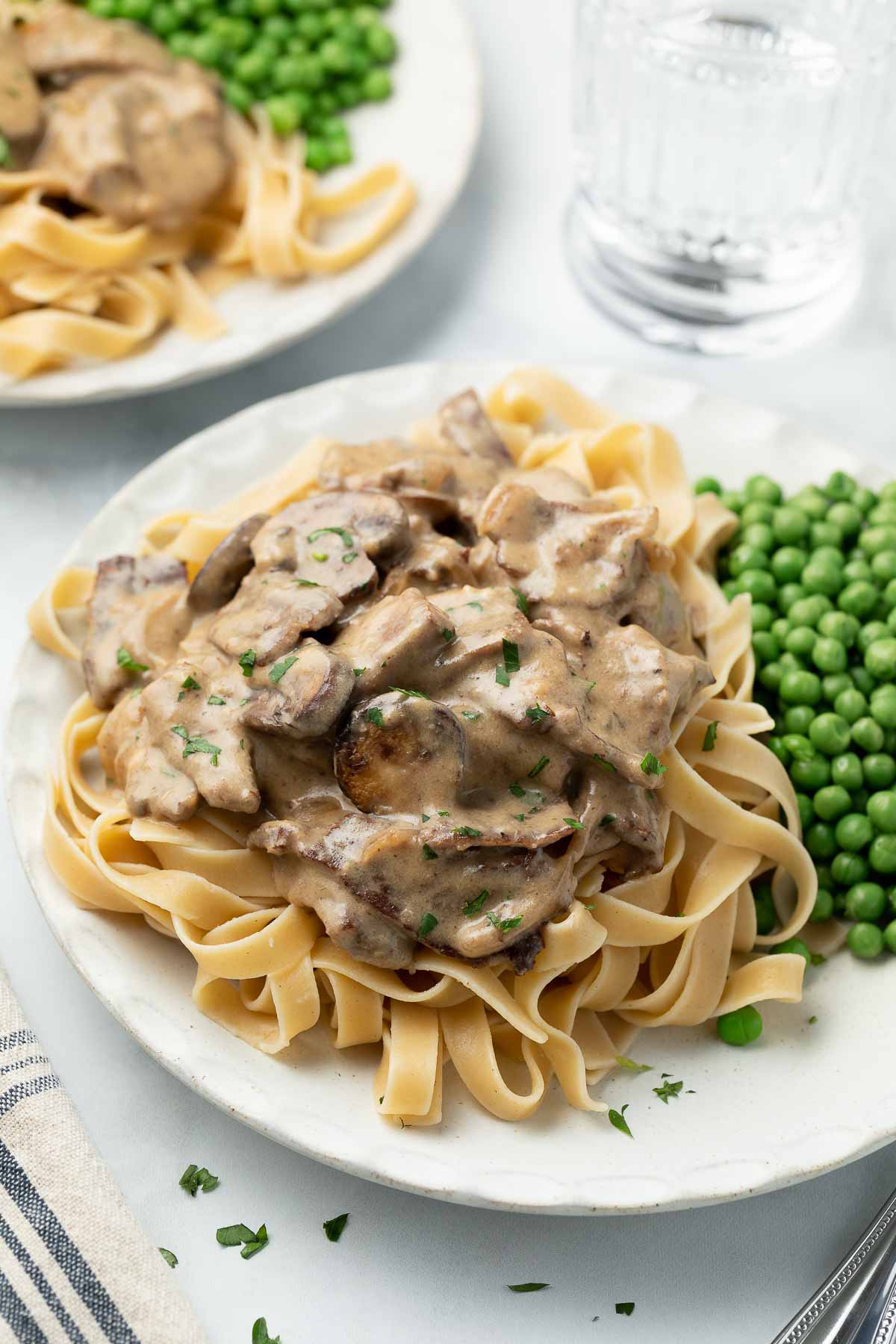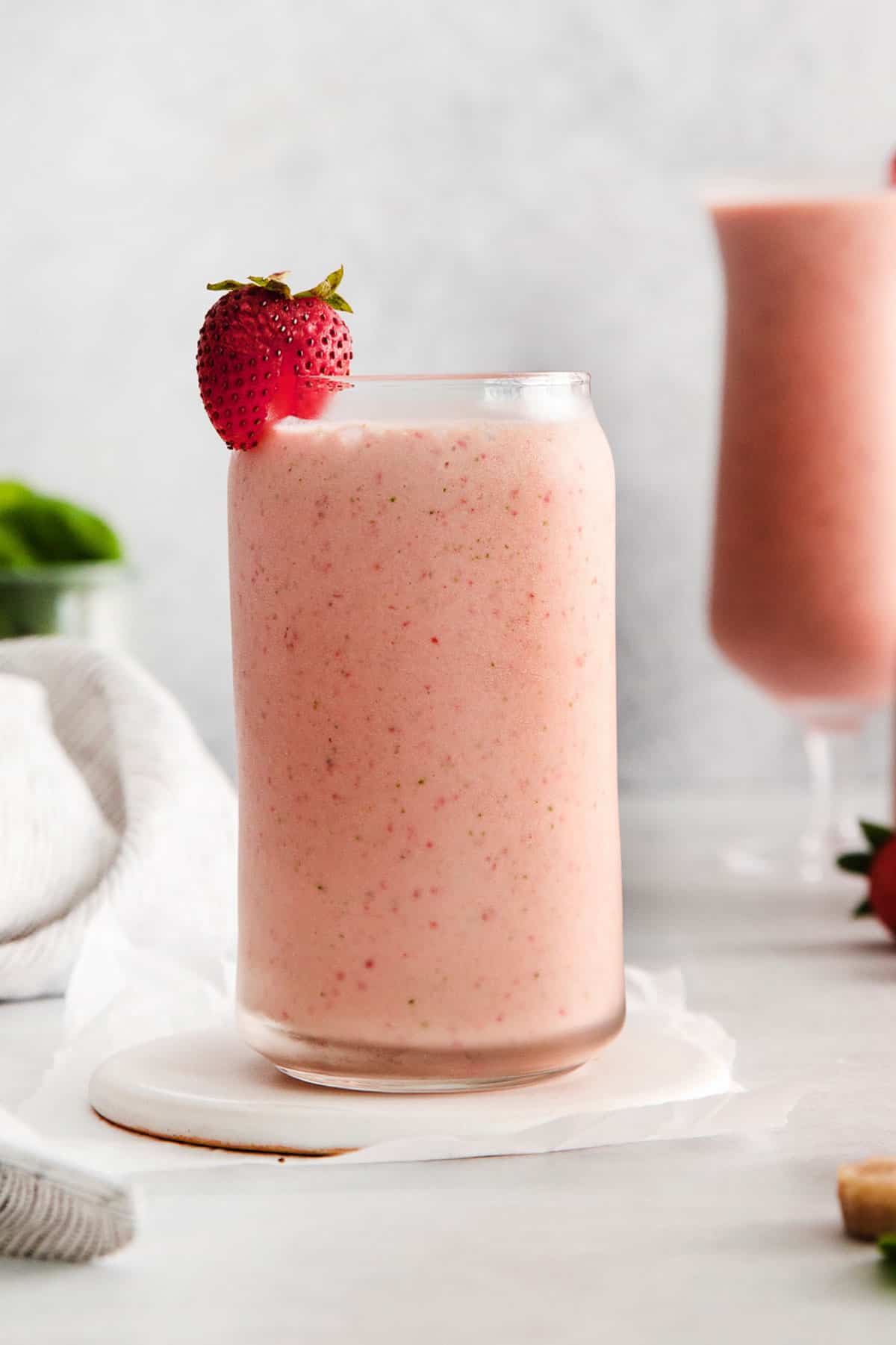 If you’re looking for an amazing gluten-free flour blend, look no further! Over the past few years I’ve experimented with a variety of different gluten-free flour combinations. I’ve been using this blend and I’ve been really happy with the results. I use this flour in place of all-purpose flour in muffins, cakes, quick breads, and cookies and it works beautifully. This blend creates the texture in baked goods I remember and miss from gluten-filled baked goods. This blend is also grain-free and much more nutritious than many gluten-free rice flour/starch blends you’ll find in the store. It also has a nice, non-chalky flavor. Buckwheat, potato starch, and arrowroot powder have natural elastic properties, so I’ve found I often don’t need to use binders like xanthan gum when using this blend. Here are the flours I use and why I use them. I’ve also linked back to my favorite brands on Amazon. Happy Baking!
If you’re looking for an amazing gluten-free flour blend, look no further! Over the past few years I’ve experimented with a variety of different gluten-free flour combinations. I’ve been using this blend and I’ve been really happy with the results. I use this flour in place of all-purpose flour in muffins, cakes, quick breads, and cookies and it works beautifully. This blend creates the texture in baked goods I remember and miss from gluten-filled baked goods. This blend is also grain-free and much more nutritious than many gluten-free rice flour/starch blends you’ll find in the store. It also has a nice, non-chalky flavor. Buckwheat, potato starch, and arrowroot powder have natural elastic properties, so I’ve found I often don’t need to use binders like xanthan gum when using this blend. Here are the flours I use and why I use them. I’ve also linked back to my favorite brands on Amazon. Happy Baking!
Buckwheat Flour – Buckwheat flour is a magical gluten-free ingredient! Despite it’s name, it doesn’t actually contain wheat. Buckwheat is a low-glycemic psuedo-grain that is full of protein, fiber, and minerals. In addition, it gives gluten-free baked goods great structure and stability. It has natural elastic properties and using it in this flour blend usually eliminates the need to use additional gums and binders. I like to make my own buckwheat flour from raw buckwheat groats (not toasted buckwheat, which is called kasha). To make the flour, simply grind up the buckwheat groats in your high-speed blender into a fine flour. Buckwheat flour sold in bags at the store often has a strong and overpowering flavor, which is another reason I prefer to make the fresh flour. Even fresh, buckwheat flour does have a distinct flavor. I like using it in combination with the following flours so the flavor isn’t overpowering. Be sure to blend the flour very well so it is finely ground.
Almond Flour – Almond flour is everyone’s favorite gluten-free flour for a reason. It adds nice flavor and moisture to gluten-free baked goods. It also ups the protein and fat content in gluten-free baked goods imparting richness and browning. Be sure to buy blanched almond flour instead of almond meal. Blanched almond flour is simply almond flour where the nuts have their skins removed before they are ground into a fine flour. Blanched almond flour creates light and fluffy baked goods. I like the brands Honeyville or Digestive Wellness. I DO NOT recommend Bob’s Red Mill’s almond flour. I love Bob’s Red Mill for other products, but their almond flour is gritty.
Potato Starch – Potato starch (not to be confused with potato flour) gives baked goods wonderful tenderness and structure. It makes cakes and quick breads light.
Arrowroot Powder – Arrowroot powder is another starch that gives baked goods a light crumb and texture. Arrowroot powder also has elastic properties that help bind gluten-free baked goods, resulting in non-crumbly treats.
Erin’s Grain-Free Flour Blend
By Weight:
- 300 grams buckwheat flour (ground finely in the blender from raw buckwheat groats)
- 300 grams blanched almond flour
- 300 grams potato starch
- 100 grams arrowroot powder
By Cups:
- 2 1/4 cups buckwheat flour (ground finely in the blender from raw buckwheat groats)
- 2 1/2 cups blanched almond flour
- 1 3/4 cups + 1 tablespoon potato starch
- 3/4 cup arrowroot powder
Mix together all the ingredients. Sift together using a large wire whisk to really incorporate all of the flours. Store in an airtight container.
*If you have a kitchen scale I highly recommend measuring the ingredients out by weight. This is much more accurate. Weighing by cup tends to vary based on how people scoop out ingredients. If you are measuring by cup, scoop the ingredients lightly and level them off rather than pouring the flours into the measuring cup.
For a great nut-free flour blend try Gluten-Free Flour from This Vivacious Life.
You also might like these articles on how to make oat flour and substitute for oat flour.















Hello Erin, The grain-free flour blend looks great. Can you post a recipe using this blend for pizza dough. Will this blend work for pan-cakes? Thank you. Mike
This looks amazing. Could you please tell if i could usd this blend to make flat breads as well, like the Asian flat breads.
This sounds like a wonderful blend and I just happen to have everything on hand. I’m off to mix some up and make some pasta in my Ronco pasta machine. Hubby & I made some last night using up the last of a bean blend flour from Nuts.com. They were so delicious that I’m now excited to make more. It’s the first time that the Ronco has been back in service in many years, since being gluten free. Also, I want to try Tigernut Flour.
Reading through the comments, a few people want to know the nutritional facts. Just look on the flour bags and that info is in your hands.
Thank you for your blog and the time you contribute to us!
P.S. I’m trying to give this a good rating but the stars don’t light up.
Have you used this grain fee blend to make pie pastry?
I haven’t! I think this blend works best for quick breads and muffins. It’s not the best for pie crust!
Hi Erin, I recently purchased blanched almond flour at Costco and plan to use it for my Cranberry Almond Biscotti recipe. The recipe asks for 2-1/4 cups of all-purpose flour. Please let me know if I should use 2-1/4 cups of blanched almond flour in my recipe. I’m looking forward to trying some of your recipes. Thanks you!
Hi Erin,
Thank you for providing a gluten free flour that truly looks healthy. I can’t wait to try!
I have a question regarding your gluten free pizza crust because I noticed in the recipe you do not use “your” gluten flour. In contrast, your link sends me to amazon to purchase the Red Mill gluten free flour.
Which one works better?
Kindly let me know,
Thank you,
Montreal, Canada
Hi Becky! Lately I’ve been using King Arthur Flour or Bob’s Red Mill 1:1 Baking Flours. I actually like the results better using these blends and they are easier for most people to buy!
Was wondering what can be substituted for almond flour. Nut allergy in family.
Hi!
Just wondering on the buckwheat flour measurement…is that measured before you blend it into flour, or after you blend it? In other words do I measure 2 1/4 cups of the groats (then blend) or measure 2 1/4 cups flour?
Thanks so much! So excited to try!!
How Erin,
I’m thinking of sprouting buckwheat groats that’s you recommended. I’ve sprouted almonds before and I’m looking forward to making this flour blend with the sprouted buckwheat and almonds. Excited to have a project now! Thanks so much for sharing your flour blend!
Hi, Erin!
I’ve scrolled through the comments and don’t see an answer to this question. Have you figured out the weight per cup (in ounces or grams) for this flour blend? I prefer to weigh my flour. Thanks so much!
I used your blend to make zucchini bread it was great, it didn’t last 2 days. Is there anything else that I can use this blend for…or is this just a good blend for basic recipes, such as cakes, cookies, and bread. I’m still learning gluten free baking
Thank you
Charles
I’m glad the zucchini bread turned out for you! This blend does indeed work best for cookies, cakes, muffins and quick bread. For pizza crust and other yeasted breads I actually liked using rice flour based blends like Bob’s Red Mill or King Arthur Flour. I hope this helps! 🙂
Wow, this was easy and inexpensive (compared to other grain-free blends and products) to make!
I was intimidated at making my own buckwheat flour but SO quick + easy. Heard I did not need a dry blade to use my Vitamix for making flour and I found that to be true, hooray!
THANK YOU for sharing this recipe 🙂
I’m so glad it worked out for you! I hope you enjoy using it!
Do you happen to sell your GF Flour Blend?
Can the GF flour blend be used in basically any of your baked goods recipes. I was going to make the Chocolate Chip Oatmeal cookies, but it doesn’t have the blend listed, but rather separate ingredients – some different than the blend.
Thanks.
hi I was just wondering if you need to store this in the fridge or not? I know on the almond flour I have it says best kept in the fridge and my potato starch says the same. Just wondering what you do. Thank you.
It depends on how fast you go through it. I usually use mine up in about a month after mixing it so storing in at room temperature has been fine. If storing it longer than that I would put it in the fridge both for the almond flour and buckwheat flour. It can’t hurt to store it in the fridge from the start though!